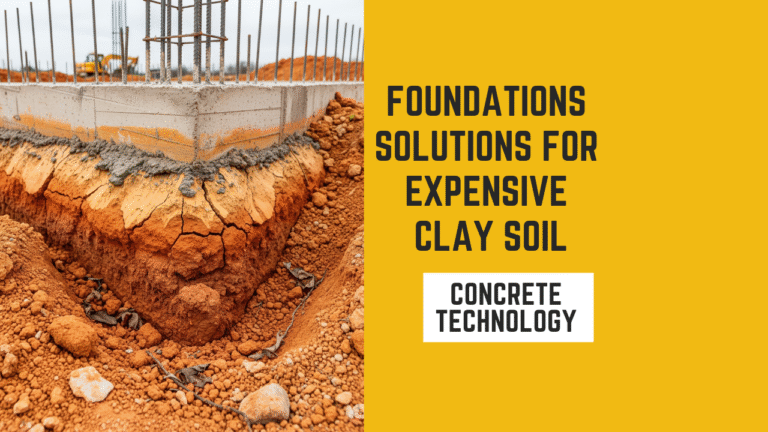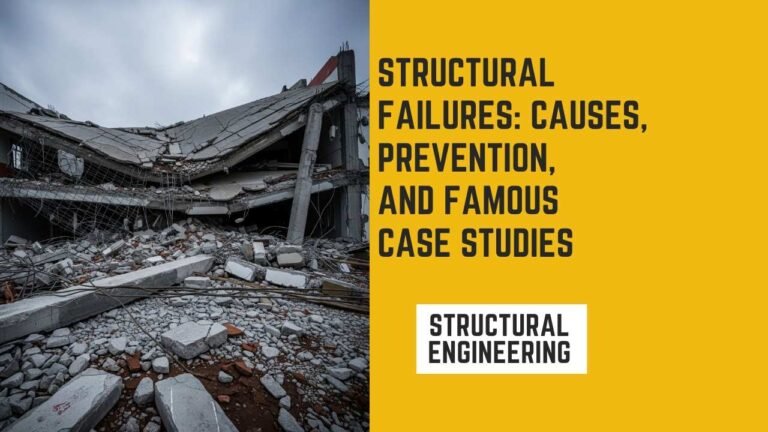Soil Mechanics: Principles,Properties,and Engineering Applications

Introduction
Soil mechanics is a branch of geotechnical engineering that determines the behavior of soil as a construction material, and it involves the study of soil properties. its interaction with structure and its response to environmental changes understanding soil mechanics is essential in civil engineering Particularly foundation design, slope, stability and earthwork
This article explores the fundamental concepts of soil mechanics, including soil composition, classification, and engineering properties. It also discusses the applications of soil mechanics in construction and infrastructure development.
Composition and Classification of Soil
Soil is a naturally occurring material composed of mineral particles, organic matter, water, and air. The composition of soil influences its strength, permeability, and load-bearing capacity. Based on grain size, soil is classified into the following categories:
- Coarse-Grained Soils—Include gravel and sand. characterized by high permeability and good drainage properties.
- Fine-Grained Soils—Include silt and clay. exhibits low permeability and high plasticity.
- Organic Soils—Contain decomposed plant material and organic matter. generally unsuitable for construction due to poor strength
Soil classification systems, such as the Unified Soil Classification System (USCS) and the AASHTO classification, help engineers determine the suitability of soil for construction.
Engineering Properties of Soil
The behavior of soil under different loads and environmental conditions are includes
1. Shear Strength
The soil’s resistance to shearing forces is referred to as its shear strength. Cohesion and internal friction between soil particles have an impact on it. Shear strength in soil is commonly analyzed using the Mohr-Coulomb theory.
2. permeability
The ability of soil to allow water to pass through its pores is referred to as permeability. Fine-grained soils, such as clay, have low permeability, while coarse-grained soils, such as sand and gravel, have high permeability. Soil permeability can be ascertained with the aid of Darcy’s Law.
3. Consolidation and Settlement
When soil progressively contracts under a weight as a result of water being forced out of its pores, consolidation takes place. Engineering design must take this process into account since it impacts the stability of the foundation. The Terzaghi’s consolidation theory predicts settlement behavior in saturated soils.
4. Compaction
Compaction improves soil density and reduces void spaces, enhancing its load-bearing capacity. Compaction improves soil density and reduces void spaces, enhancing its load-bearing capacity. It is accomplished mechanically by vibration, tamping, or rolling.
5. Bearing Capacity
Bearing capacity defines the ability of soil to support loads without failure. Terzaghi’s bearing capacity equations help engineers in assessing soil stability for foundation design.
Applications of Soil Mechanics in Engineering
applications, soil mechanics is essential, including
1. Foundation Engineering
The structural soundness of buildings, bridges, and other infrastructure is guaranteed by a solid foundation. In order to choose the best foundation types—such as shallow foundations for firm soils and deep foundations for weak or compressible soils—engineers evaluate the characteristics of the soil.
2. Earthworks and Embankments
Soil mechanics guides the construction of embankments, dams, and retaining walls. Proper soil compaction and drainage measures are essential for stability.
3. Slope Stability and Landslide Prevention
The study of soil mechanics helps in assessing slope stability and implementing measures to prevent landslides. Engineers use stability analysis to design protective structures and drainage systems.
4. Pavement Design
Road construction relies on soil mechanics for subgrade preparation and pavement thickness determination. Well-compacted soil improves the durability of highways and airport runways.
5. Ground Improvement Techniques
Various soil improvement methods, such as soil stabilization, grouting, and reinforcement, enhance soil strength and reduce settlement risks. These techniques are crucial in regions with weak or problematic soils.
Challenges in Soil Mechanics
Despite its importance, soil mechanics presents several challenges, including
- Variability in Soil Properties—Natural soil deposits exhibit inconsistent characteristics, making predictions complex.
- Environmental Factors—Changes in groundwater levels and climate conditions affect soil behavior.
- Soil Erosion—Water-induced erosion threatens infrastructure stability and requires mitigation strategies.
Future Innovations in Soil Mechanics
Soil stability and testing precision are being enhanced by developments in geotechnical engineering.
- Smart Sensors for Real-Time Monitoring—Detect soil movement, moisture changes, and stress levels.
- AI-Driven Soil Behavior Predictions—Enhances risk analysis and foundation optimization.
- Sustainable Soil Engineering Techniques—Uses eco-friendly materials for stabilization.
Conclusion
In geotechnical engineering, soil mechanics is a basic field that affects infrastructure development, environmental sustainability, and building. Ensuring the safety and stability of structures requires engineers to have a solid understanding of soil qualities, behavior, and engineering principles. By using their understanding of soil mechanics, experts may reduce hazards, enhance ground stability, and maximize building projects.
soil mechanics is essential in civil engineering Particularly in infoundation design, slope, stability, and earthwork. The area of soil mechanics is still developing and has an impact on everything from space exploration to urban development. Soil is a naturally occurring material composed of mineral particles, organic matter, water, and air. Future geotechnical design will be shaped by AI-driven analysis, intelligent monitoring, and sustainable engineering as technology develops, guaranteeing durable, safe, and effective infrastructure across the globe.






